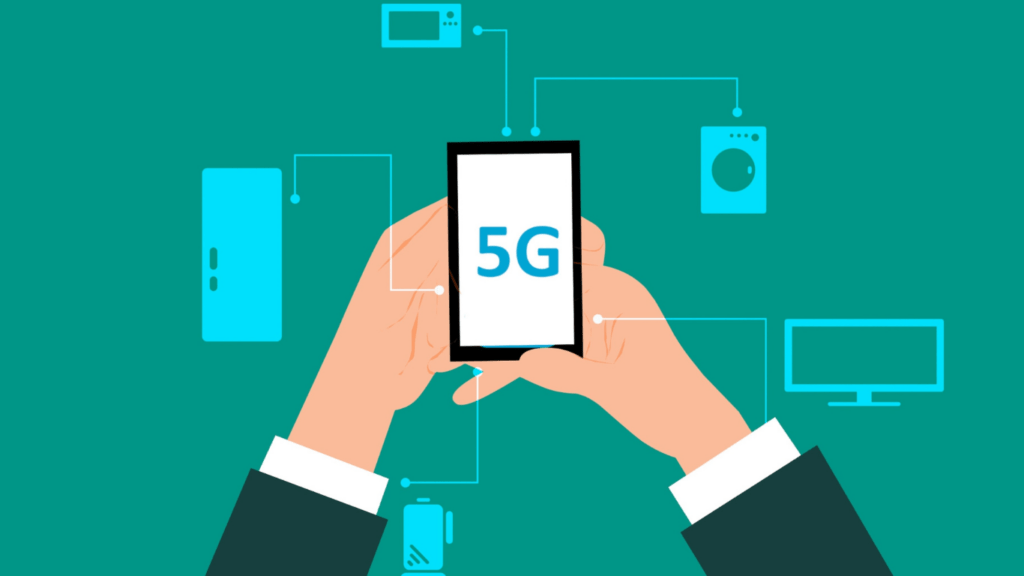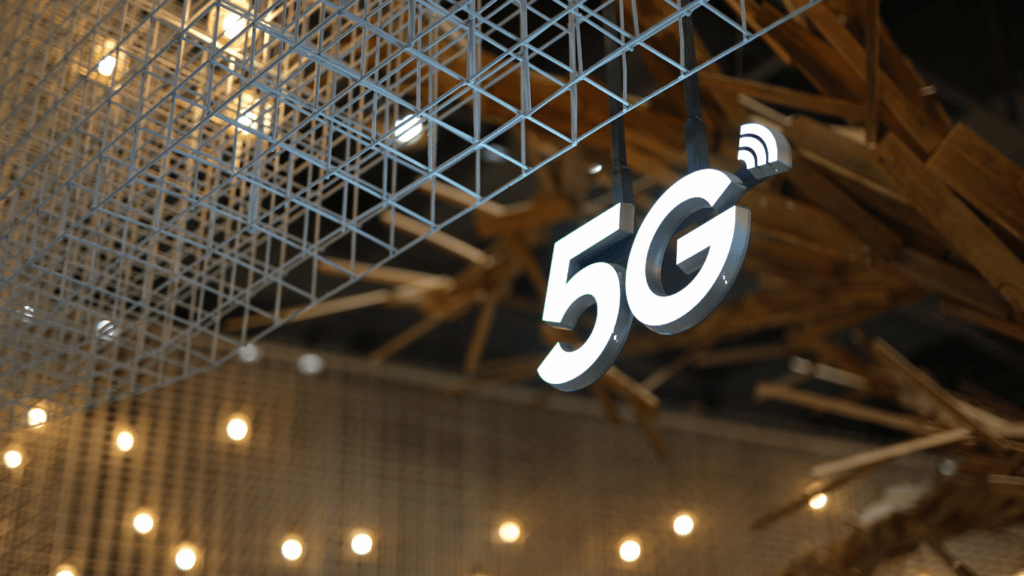The Evolution of Mobile Networks
Mobile networks have evolved significantly over the years, each generation bringing new capabilities and advancements. The first generation (1G), introduced in the 1980s, provided analog voice service. Although basic by today’s standards, 1G laid the groundwork for more sophisticated cellular networks.
In the 1990s, the second generation (2G) replaced analog signals with digital ones. This shift enabled text messaging (SMS) and multimedia messaging (MMS), enhancing communication beyond voice calls. 2G’s digital nature also improved call quality and security.
The early 2000s saw the advent of the third generation (3G), which facilitated mobile internet access. For instance, 3G enabled video calls and mobile web browsing, making smartphones essential tools for everyday life. 3G networks supported higher data transfer rates, fostering the growth of mobile applications and services.
The fourth generation (4G), rolled out in the 2010s, brought even faster data speeds and more reliable connections. Streaming high-definition videos, online gaming, and video conferencing became practical activities on mobile devices thanks to 4G. The increased bandwidth and lower latency of 4G networks also supported the rise of social media, cloud computing, and IoT (Internet of Things).
The fifth generation (5G) promises to deliver unprecedented performance. With speeds up to 100 times faster than 4G, 5G seeks to revolutionize mobile connectivity. Ultra-low latency and higher capacity will enable innovations such as connected autonomous vehicles, smart cities, and immersive augmented reality experiences. If the deployment is successful, 5G will pave the way for an even more interconnected world.
What Is 5G?
5G is the fifth generation of mobile network technology. It promises faster speeds, lower latency, and higher capacity than previous generations.
Key Features of 5G
Key features of 5G enhance user experience and enable new applications.
- Speed: 5G offers download speeds up to 10 Gbps, which is up to 100 times faster than 4G.
- Latency: With ultra-low latency, 5G reduces lag time to as low as 1 millisecond.
- Capacity: 5G supports up to 1 million devices per square kilometer.
- Reliability: 5G provides more consistent and reliable connections.
- Bandwidth: 5G utilizes a broader spectrum, from sub-1 GHz frequencies to millimeter waves (24-100 GHz).
Differences Between 4G and 5G
Understanding the differences between 4G and 5G highlights why 5G is so transformative.
- Speed: 4G typically offers speeds up to 100 Mbps, while 5G reaches up to 10 Gbps.
- Latency: 4G latency ranges from 30 to 50 milliseconds, whereas 5G can go as low as 1 millisecond.
- Capacity: While 4G struggles with high device density, 5G can support a much higher number of connections.
- Energy Efficiency: 5G networks are designed to be more energy-efficient, reducing overall power consumption per device.
- Flexibility: 5G allows network slicing, meaning it can create multiple virtual networks tailored to different services or applications.
These advancements indicate that 5G isn’t just an incremental improvement but a fundamental leap in mobile technology.
Technological Advancements Powering 5G

5G technology leverages several advanced features to deliver its transformative capabilities. Key among these are mmWave technology, Massive MIMO, and network slicing.
mmWave Technology
mmWave technology uses millimeter waves to transmit data at exceedingly high frequencies, typically between 30 GHz and 300 GHz. This allows for very high data transfer rates. For example, mmWave can deliver speeds upwards of 10 Gbps. Since higher frequencies carry more data, mmWave significantly enhances network capacity and reduces congestion. However, these waves have limited range and are easily obstructed by physical objects like buildings and trees. To enhance coverage, small cells are deployed to work in tandem, ensuring robust and consistent connectivity in urban centers and other high-density areas.
Massive MIMO
Massive MIMO (Multiple Input, Multiple Output) technology boosts network performance by employing numerous antennas at base stations and on devices. By utilizing multiple antennas, Massive MIMO increases capacity and spectrum efficiency. For instance, a single base station equipped with hundreds of antennas can simultaneously serve many users, each with a dedicated data stream. This means less interference, faster data speeds, and improved network reliability. Massive MIMO stands as a core enabler of 5G’s promise of higher capacity and better connectivity in densely populated areas.
Network Slicing
Network slicing allows the creation of multiple virtual networks on a single physical 5G infrastructure. Each slice can be tailored to specific applications or services. For example, one slice can prioritize low-latency requirements for autonomous driving, while another can optimize high-bandwidth needs for video streaming. This flexible approach ensures that diverse use cases can be efficiently supported without compromising performance. Network slicing not only enhances service delivery but also provides increased security by isolating critical communications from other network traffic.
Benefits of 5G for Consumers
5G technology offers numerous advantages that directly enhance everyday consumer experiences. These benefits transform how we interact with digital content, communicate, and use technology.
Faster Internet Speeds
5G delivers download speeds up to 10 Gbps, drastically improving how quickly we can access online content. For instance, downloading a full HD movie takes just seconds. This ability to rapidly access high-quality media improves productivity as large files upload and download almost instantly, boosting efficiency in both professional and personal tasks.
Improved Connectivity
5G’s capability to support up to 1 million devices per square kilometer ensures a seamless connection, even in densely populated areas. This improvement means no more dropped calls or slow internet during crowded events. Smart homes with numerous connected devices from thermostats to security systems benefit significantly, providing consistent performance and reliability.
Enhanced Mobile Experiences
The ultra-low latency of 5G, as low as 1 millisecond, enables real-time applications, including:
- augmented reality (AR)
- virtual reality (VR)
This latency reduction enhances mobile gaming experiences by eliminating lag, making gameplay more immersive and responsive. Furthermore, video calls and live streaming become much clearer and more stable, providing a richer communication experience.
Potential Applications of 5G
5G technology isn’t just about faster internet speeds. Its high capacity and ultra-low latency unlock applications that can fundamentally change various industries and aspects of daily life.
Smart Cities
5G can transform urban living through smart cities. With support for up to 1 million devices per square kilometer, it’ll enable more connected infrastructure. Sensors can provide real-time data for traffic management, reducing congestion and emissions. For example, smart traffic lights can adjust their signals based on real-time data, optimizing flow and reducing commute times. Public safety improves as 5G allows for quicker deployment of emergency services through enhanced communication systems. Additionally, smart grids can manage energy distribution more effectively, ensuring a stable supply and reducing outages.
Autonomous Vehicles
Autonomous vehicles (AVs) rely heavily on fast, reliable communication. 5G’s ultra-low latency as low as 1 millisecond ensures near-instantaneous data transfer, which is crucial for real-time decision-making in AVs. Vehicles can communicate with each other and traffic infrastructure to avoid collisions and optimize routes. For example, an AV can instantly receive data about sudden stops or hazards from other vehicles, allowing for immediate action. This not only enhances safety but also improves traffic efficiency and reduces travel time.
Enhanced Healthcare
Healthcare stands to benefit significantly from 5G. Telemedicine can become more reliable and widespread, with high-quality video consultations becoming seamless. In surgery, 5G can enable remote operations with minimal lag, as surgeons control robotic instruments from different locations. Wearable health devices generate vast amounts of data, which can be transmitted and analyzed in real time, allowing for better patient monitoring and timely interventions. For instance, a heart rate monitor can instantly alert doctors to any irregularities, potentially saving lives.
By enabling these advanced applications, 5G technology demonstrates its transformative potential across different sectors, enhancing efficiency, safety, and quality of life.
Challenges and Concerns
Deploying 5G technology involves several challenges and concerns. Below, I detail the key issues that could impact its widespread adoption.
Infrastructure Requirements
Creating a robust 5G network demands significant infrastructure investments. Unlike 4G, which relies on large cell towers spaced miles apart, 5G uses small cells that cover shorter distances. These small cells must be installed on streetlights, buildings, and utility poles every few hundred meters to ensure consistent coverage, especially in urban areas.
This densification strategy requires collaboration between telecom companies and local governments, adding layers of complexity to the deployment process. Additionally, rural areas might face slower rollouts due to the higher costs and logistical challenges of installing new infrastructure across vast, sparsely populated regions.
Security Issues
Adopting 5G introduces new security vulnerabilities. The proliferation of connected devices creates more entry points for cyberattacks. Since 5G supports up to 1 million devices per square kilometer, securing this expansive network becomes increasingly intricate.
Network slicing, while enhancing service delivery, also introduces security risks if slices aren’t adequately isolated from one another. Insecure devices within a network slice could compromise the entire network.
Furthermore, the shift to software-defined networking (SDN) in 5G means that network management increasingly relies on software, presenting unique challenges to ensure the software’s security and integrity.
Health Concerns
Health concerns about 5G often focus on the potential effects of increased exposure to radiofrequency (RF) electromagnetic fields. The deployment of small cells leads to more sources of RF emissions in close proximity to people.
Although the World Health Organization and other authorities maintain that 5G RF emissions are within safe limits, public apprehension persists.
Critically, 5G technology uses higher frequency bands, such as millimeter waves, which haven’t been extensively studied for long-term health impacts. Continuous scientific research and transparent communication are essential to address these concerns, reassuring the public that 5G deployment adheres to rigorous safety standards.


 Paulah Simmonserly, the visionary behind News Flip Network, has built a platform that delivers timely and comprehensive news across multiple fields. With a deep passion for journalism and a commitment to keeping the public informed, Simmonserly ensures the site covers everything from global affairs to business trends, health insights, and sports updates. Her leadership emphasizes accuracy and relevance, making News Flip Network a trusted resource for readers seeking up-to-date information on the events shaping the world.
Paulah Simmonserly, the visionary behind News Flip Network, has built a platform that delivers timely and comprehensive news across multiple fields. With a deep passion for journalism and a commitment to keeping the public informed, Simmonserly ensures the site covers everything from global affairs to business trends, health insights, and sports updates. Her leadership emphasizes accuracy and relevance, making News Flip Network a trusted resource for readers seeking up-to-date information on the events shaping the world.